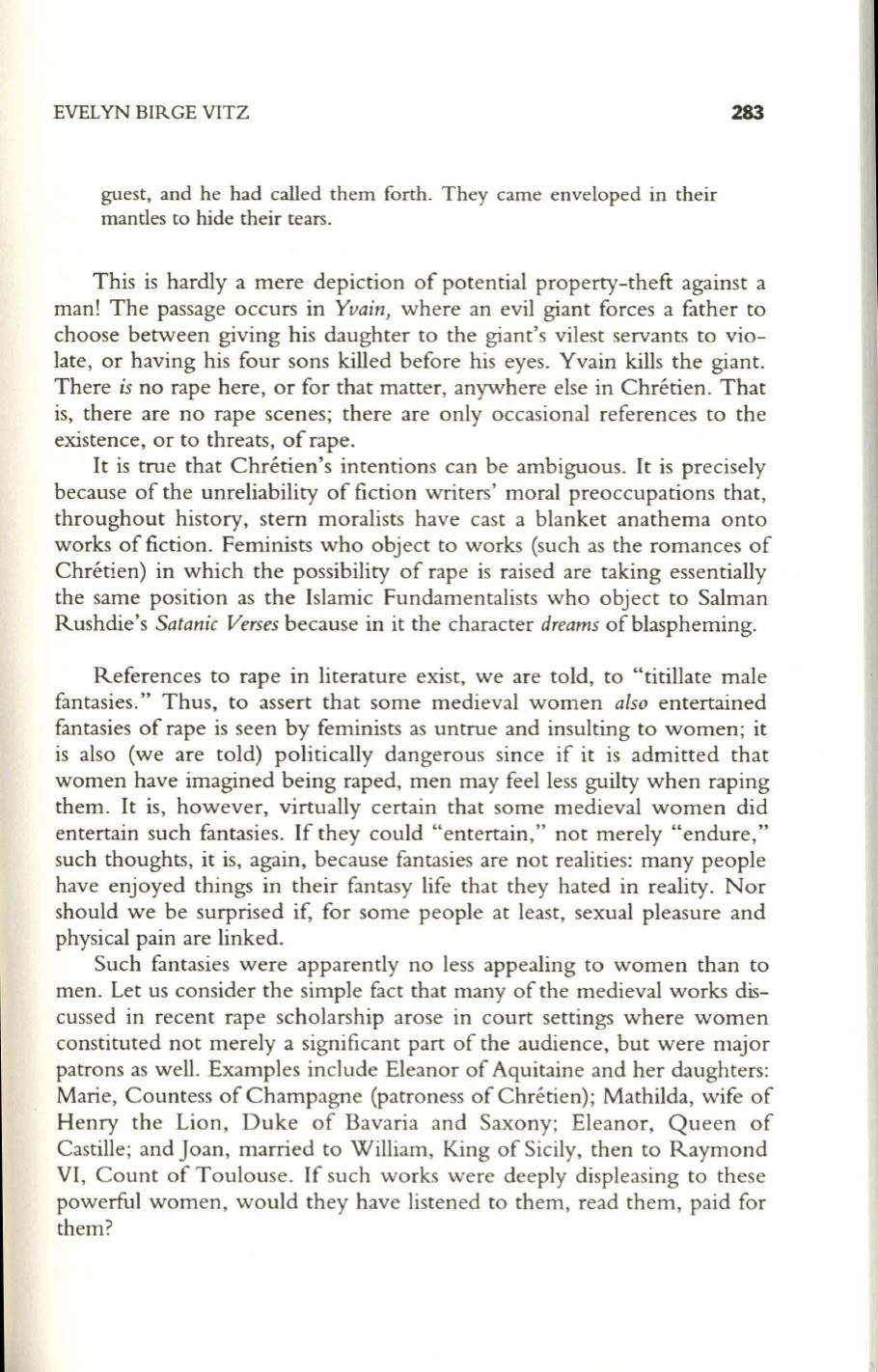
EVELYN BIRGE VITZ
guest, and he had called them forth . They came enveloped in their
mantles to hide their tears.
283
This is hardly a mere depiction of potential property-theft against a
man! The passage occurs in
Yvain,
where an evil giant forces a father to
choose between giving his daughter to the giant's vilest servants to vio–
late, or having his four sons killed before his eyes. Yvain kills the giant.
There
is
no rape here, or for that matter, anywhere else in Chretien. That
is, there are no rape scenes; there are only occasional references to the
existence, or to threats, of rape.
It
is true that Chretien's intentions can be ambiguous.
It
is precisely
because of the unreliability of fiction writers' moral preoccupations that,
throughout history, stem moralists have cast a blanket anathema onto
works of fiction. Feminists who object to works (such as the romances of
Chretien) in which the possibility of rape is raised are taking essentially
the same position as the Islamic Fundamentalists who object to Salman
Rushdie's
Satanic Verses
because in it the character
dreams
of blaspheming.
References to rape in literature exist, we are told, to "titillate male
fantasies." Thus, to assert that some medieval women
also
entertained
fantasies of rape is seen by feminists as untrue and insulting to women; it
is also (we are told) politically dangerous since if it is admitted that
women have imagined being raped, men may feel less guilty when raping
them.
It
is, however, virtually certain that some medieval women did
entertain such fantasies. If they could "entertain," not merely "endure,"
such thoughts, it is, again, because fantasies are not realities: many people
have enjoyed things in their fantasy life that they hated in reality. Nor
should we be surprised if, for some people at least, sexual pleasure and
physical pain are linked.
Such fantasies were apparently no less appealing to women than to
men. Let us consider the simple fact that many of the medieval works dis–
cussed in recent rape scholarship arose in court settings where women
constituted not merely a significant part of the audience, but were major
patrons as well. Examples include Eleanor of Aquitaine and her daughters:
Marie, Countess of Champagne (patroness of Chretien); Mathilda, wife of
Henry the Lion , Duke of Bavaria and Saxony; Eleanor, Queen of
Castille; and Joan , married to William, King of Sicily, then to Raymond
VI, Count of Toulouse. If such works were deeply displeasing to these
powerful women, would they have listened to them, read them, paid for
them?


